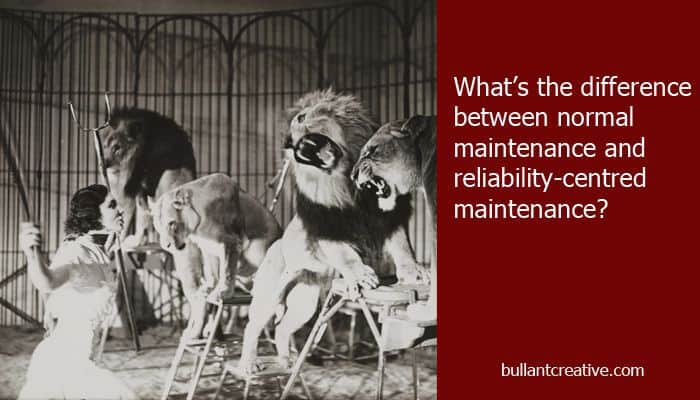Maintenance management can be something of a thankless job, not helped by the differences in how people define maintenance and reliability.
In most cases the reliability of a factory is delegated to the maintenance manager however few can articulate the difference between reliability and maintenance. Even fewer can define the difference between normal maintenance and reliability-centred maintenance. Usually the difference is really down to perspective.
A maintenance manager, carrying out normal maintenance, focuses on the technical equipment. The way a maintenance manager assesses performance is by how often equipment breaks down and when it does break down, how long does it take to recover the equipment back to normal operation.
When asked if the factory is reliable the maintenance manager will often recite a list of figures including Mean Time To Failure (MTTF), Mean Time To Repair, ratios of preventative maintenance to restorative work orders, spares usage, the list goes on.
How does a Plant Manager or a Supply director define reliability? Its usually very different from a Maintenance Manager. Reliability from a senior managers perspective is more about delivery to the customer. How reliable is the factory in its ability to deliver product orders to the forward warehouses in full and on time. Whether we like it or not, the senior managers perspective on reliability is more closely attuned with what the customer wants and so this should be used as our broad definition of reliability.
Reliability-centred maintenance then is normal maintenance that is prioritised and refined according to the reliability needs of the broader supply chain.
If the factory produces the same product all the time with very little variation then there is not much prioritisation to be done. If however there are many products undergoing lots of change and many customers with changing needs then normal maintenance activities must be guided by the reliability needs of the broader supply chain and therefore they have to be even more reliability-centred.
There are three guiding mechanisms that should be added to a normal maintenance effort to make it reliability-centred in a high-change environment;
1. Probing System
A way of probing the performance of the factory that takes into account product demand concentration, the changing capacity of equipment while producing different products, and the variability of line performance for different product families.
2. Nurturing System
A way of monitoring the introduction a change activities into the production system so that they can be prioritised and nurtured so that any impacts on supply reliability are minimised.
3. Improvement System
Acute awareness of the operation excellence system and the way it improves the broader supply chain.
In summary, Reliability-Centred Maintenance is Normal Maintenance which is guided by a broader supply chain perspective.
